Bishop's Palace Gardens, Wells
A group of us garden designers got together for an Autumn visit to Wells to see these stunning gardens which truly have the ultimate genius loci.
Sunday 1 January 2012
general
This garden is the Ninfa of Somerset! Ninfa? In Somerset? Well.... think water, gardens and ruins. These are its genius loci. OK, Wells is just a few degrees north, but it has them all. And they are the business!
From bustling Wells, you cross the moat via a drawbridge. (In times gone by Bishops were security conscious too!) The palace gatehouse leads to an immense oval croquet lawn. You snigger at the thought of ancient clerics playing that devious game which truly belongs to the British ‘ gratin’.
Bet they were brutes at it!
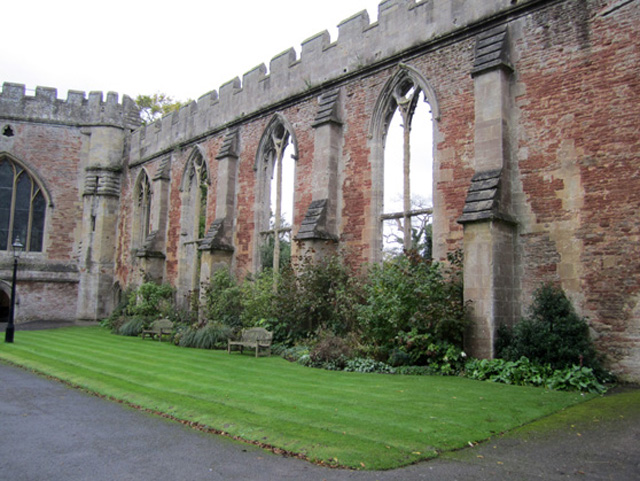
Beyond lies the ruined shell of Bishop Burnell's medieval hall. Apparently some 15th century bishop sold the lead off the roof. (Blimey, first they're 'keep the thieves out' and then they're 'we'll loot the metal ourselves!')
In the mid 19th century Bishop George Henry Law decided it would all look even more romantic, the less of it there was and promptly pulled half of it down. Genius! But that is def not something we could do now - 'Oh, you can't do that its listed' !
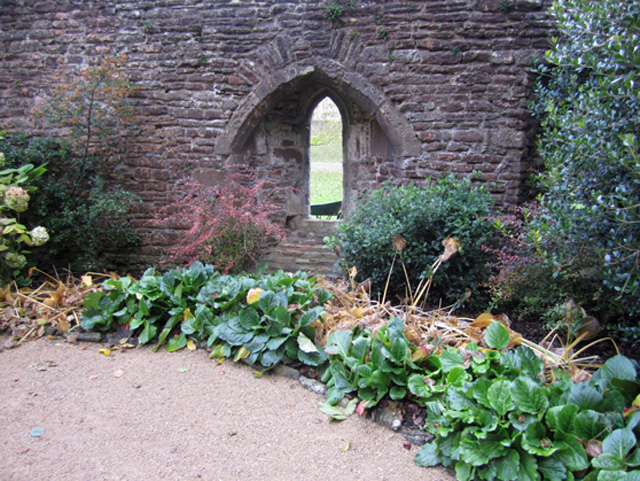
But us we love a good ruin. Old Bishop Law was our main man! In fact ever since seeing Nymans as a child one of us has longed to garden in a ruin.
You pass through these walls as through a curtain.You are therefore both moated and walled…..you are secure. So its the ultimate garden designer's dream of enclosed space. We call it ‘comfortable’ enclosure.
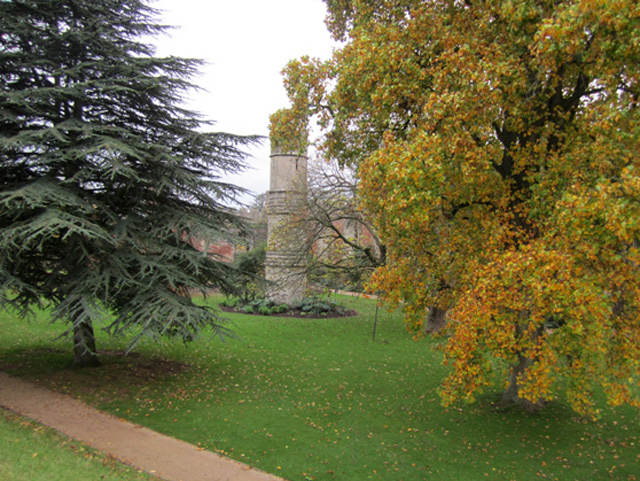
This generous space has wide gravel to dust paths, lawns and smart specimen trees and is quite quietly rather grand. The beauty of the surrounding battlemented walls is that you can mount them and, from the vantage point their gentle height offers, look down inside the demesne or look down outside, and across to the far horizon.
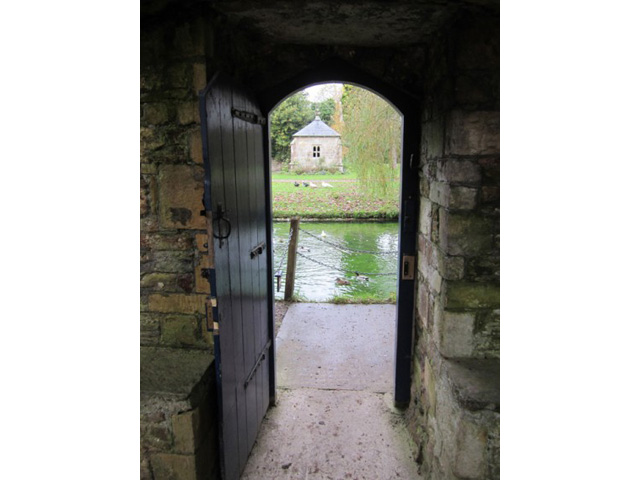
You perceive different routes, parallel paths and perspectives are constantly changing. Back on the ground you cross bridges,pop in and out through doorways and walk on either sides of the walls and the water.
The water ……...This is the clincher for 'the Ninfa effect':
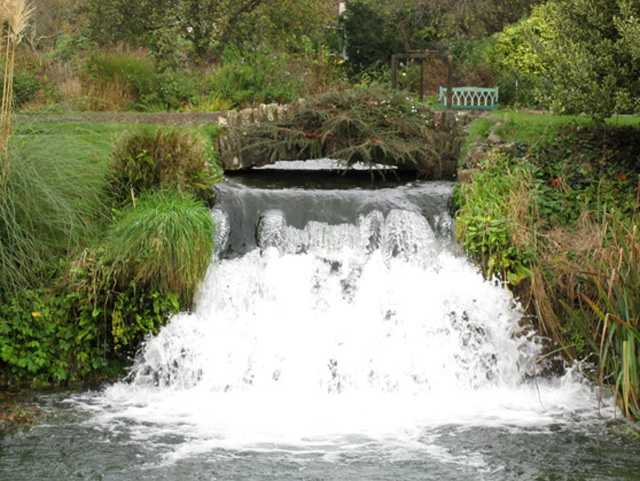
Its source is 4 springs, the very wells which give the city its name, which arise beneath an apparently still pool, in which is reflected the tower of the neighbouring cathedral. From here this body of water slides sideways through this sluice with some power, producing: 40 gallons a second apparently.
One, two three, four...... Yeees that is actually quite something.The entire moat contains 4 million gallons. Ok I take their word for it! Guidebooks were ever about stats. Never mind the volume, the deal is its stunning clarity.
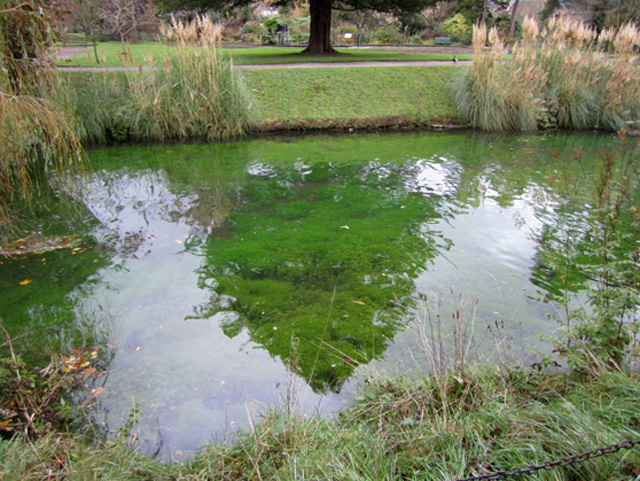
Tho of course the two are related. 31.5 millions of gallons of crystal clear water a year flow out of the ground, rush round the gardens and then out into the River Sheppey. If you work it out, its a complete water change for the moat every 50 days. I can do stats too!
Even the plentiful waterfowl and swans don’t affect it any:
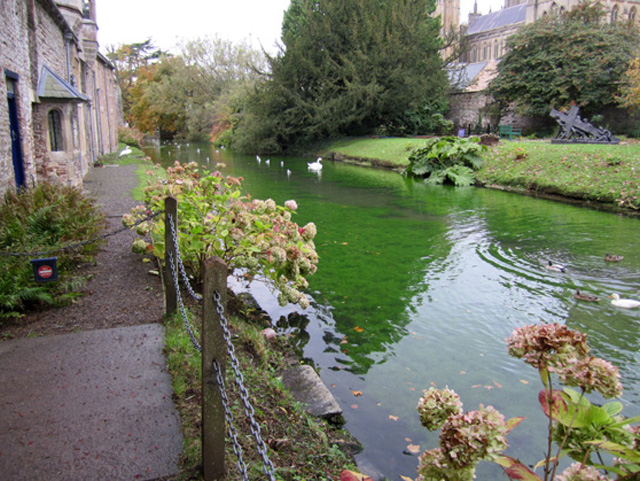
I guess with that volume of new water their little bottoms are practically pressure washed daily. They have it good all ways actually since someone has trained the swans to yank on a rope to sound their lunch bell. Come to think, it sounds like the sort of idea a bishop might have!
There is sculpture:

Some very good and some frankly quite horrid. There are places to sit. There is planterliness:
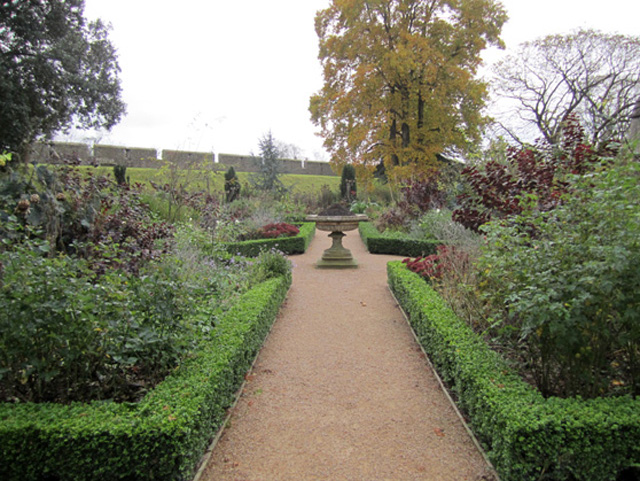
We loved this formal area with its casual and rather eccentric juxtaposition of purple bananas, fastigiate yew, roses, globe artichokes, aralias and grasses. I mean, while we are at it, lets just throw the works at it! Fun!
It is the repeated use of plant and colour rather than drift size which is holding it all together.Great two to see large leaved box used for hedging. So buxom ( that's where that word comes from!) compared to gardens where box hedges look diseased, starved and over clipped.
More borders are being created. There has been an influx of heritage lottery funding.
We weren’t sure that the planted 'doily' beneath the turret quite worked and we weren't sure we really wanted too much more planting . But it is early days…. And gardens take time. We should revisit in the fullness of time, as it were.
And this is a potent aspect of garden visiting that garden owners should note. Visitors like to follow a garden. And they like to see progress, evolution.
And, come to think of it, gardens need that. A garden which is in any sense 'finished' is stale indeed!
We left as we had come back over the drawbridge. The last time it was raised was in The Gordon Riots of 1780, You have to laugh at thought of a load of old clerics all shouting 'action stations'!
But for us it was through the gatehouse, and back into the real world:
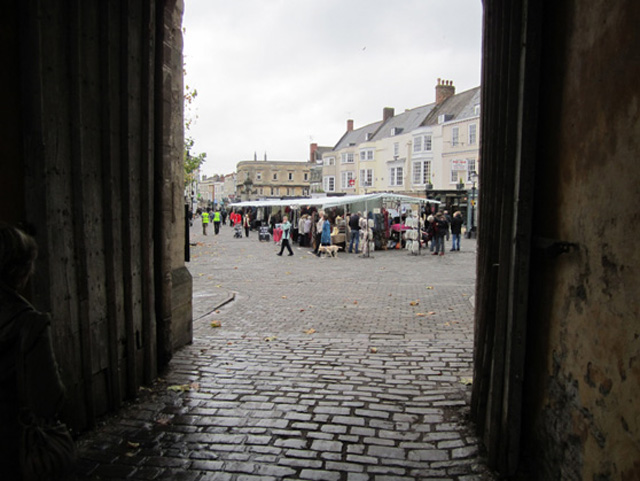
Wells on market day!Doubtless there have been markets on that spot for as long as there has been a garden at the Bishop's Palace.
Only 800 years!
R

